Dust is one of the most irritating annoyances that a building occupier can endure. To address this problem, the source of the dust must be identified, and the appropriate solution introduced as soon as possible.
Indoor dust generally falls into three categories:
Dust walked or carried inside: Dust particles can accidentally be introduced indoors from our shoes, our clothes, our pets and things we carry inside, tracked in, creates dust.
Blown in: Pollen, industry, fire and smoke, vehicle exhaust particulates, wind, and other organic debris can also be blown in if allowed through open windows and doors, through building gaps and cracks.
Attract and trap dust like magnets: Clothes dryers, top of fridges, electronics, soft furnishing fabrics, carpets, air conditioning and heating ducts, vents, roof cavities and sub floor basements, wall paper, knick knacks and stuff!
Predominantly 60% of house dust originates from outdoors either tracked or blown in. As new homes become air tighter, and more heavily electronic, the dust problem is an increasing one as it becomes trapped, makes the building more dirty, and attracts more dust.
Similarly, dust in the Jenolan Caves, located south west of Sydney in the blue Mountains, was shown to be both blown from the surface and tracked in mainly by visitors and considered a major threat to the caves’ environment according to Michie (1997).
The best way to distinguish dust type is by source. Different source combinations provide good indicators of exactly what substance is contained in a given dust.
Natural Sources
There are so many sources of dust, so I have broken it down into outdoor and indoor causes.
Outdoor
Naturally derived dust contains most likely organic dust particles caused by soil erosion, decomposing leaves, pollen and other plant matter, bacteria, viruses, mould, fragmented cockroach and insect parts, bush fires and household fire places and outdoor pollution.
Indoor
Whilst indoors, in any building whether residential, commercial or lifestyle, dust contains human skin flakes and hair, dust mites and their excrement, food crumbs, pest and unwanted pet dander, rodent excrement, cigarette smoke, papers and books. Organic dust particle contaminants caused by water damage, mould, bacteria and viruses.
Man-Made Sources
So lets break it down, excuse the pun!
Outdoor
This dust is more than likely from inorganic materials, check the area around the building for the offending sources. Heavy metals such as lead, arsenic, asbestos dust, volatile organic compounds from agricultural DDT, herbicides, pesticides, fertilizers, vehicle exhaust, bush fire air pollutants and lawn mowing.
Where there is no evidence of organic matter, it is likely to have been caused by inorganic sources. This dust combination is caused by mining, smelting, other industrial processes, emissions from combustion of fuel, coal, gas and oil.
Indoor
This dust combination indicates fabric in the mattress, pillows, bedding, curtains, blinds, flame retardants, upholstery and carpeting are the culprits. Fibres, dryer lint, building insulation. Dust particulates in the frying and barbequing smoke, photo copiers, fax machine, computer towers.
Once you’ve got a good idea of the cause of dust, it’s time to test the theory and confirm the source of the problem. If an organic dust source is suspected, try wiping a damp microfibre cloth over hard surfaces and use a vacuum with a power head and HEPA filter and organic dust will come away easily. Simply rinse out the microfibre between surfaces or between rooms.
Inorganic dusts, on the other hand, react best to the micro fibre cloth and vacuum process as well as operating a good quality air purifier. The best method is best applied to all dust, and see if it is removed or decreases.
How To Get Rid of Dust
From Outdoor
Outdoor dust is best addressed by wiping your feet at the front door, then mopping hard surface floors with microfibre or vacuuming carpeted floors. First, remove all shoes before entering, everyone who occupies this building including guests, to ensure nothing enters the building. Besides, if you have carpets, they will last longer.
PRODUCT:
Door Mats
Choosing the right door mat will help reduce the dust entering your house. To help you out, we have done some research and found these that will do the job.

Check doors and windows to make sure seals are working well and have not deteriorated.
Check for holes and splits in the exterior surfaces, sub floor and roof cavities, to ensure that dust blown in to these areas doesn’t pull into living spaces.
When wind hits these exterior surfaces, the materials will take the big hit. That means, your indoors will be protected over time and might see a more drastic change in dust levels, which is a good thing — thank you, maintenance
PRODUCT:
Buy a fly screen for your home.
With a wide variety of options available to cover most budgets and home styles, make sure yoou do your homework and find something that suits but most importantly, keeps the insects out!
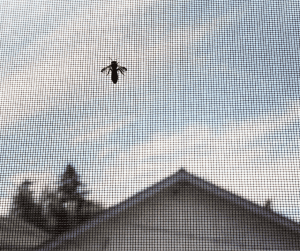
From Indoor
Keep Rooms Well Ventilated
Why? We’ve just mentioned seal up! Remember the Volatile Organic Compounds in the dust list of ingredients – they’re tiny residual particulates accumulating and potentially a health hazard for indoor occupants.
Close Windows
What? Now you’re saying close windows! Remember pollen, those of you who are sensitive definitely will. Close windows at dawn and dusk as pollen is the most active at this time of day.
Check Indoor Cleaning Maintenance
You also want to check your cleaning maintenance schedule as in cleaning and clearing away clutter from the surfaces. Dust can often introduce a mind of its own, find its way to the least used places, and your cleaning system will start removing dust away from the interiors.
That means, your ventilation capacity might be less than adequate as well. So be sure to check these areas around and under the building.
Check Your Moisture Content
Of course, moisture will add more dampness to your building interior than what’s needed. Open curtains and windows, let that lovely, natural sunlight in. If you have an excess of moisture to your indoors, whether condensation, humidity or steam, you can dry it a little by opening windows. Just let the air in the space, dry until it’s back at the comfortable level. Dust mites love humidity!
You would need to be concerned about your corresponding damp areas on the ceilings and walls inside – these are greatly affected by potential mould over time and clings to dust
HOW TO:
How To Get Rid of Indoor Mould
Are you having guests coming over and now your indoors smell musty? Or are you the kind of person who constantly has black spots all on the walls no matter what you do? Does it seem like there is no way to get rid of the mould in your home?
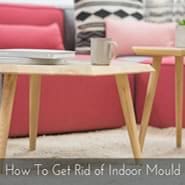
Check Your Dust Mite Content
Soft furnishings such as bedding, lounges and carpets will add more dust mite activity to your interiors than what’s already there. Keep beds unmade, and like mould care, let that lovely, natural sunlight in, ventilate and dry the space by opening windows. This will keep dust mites at the comfortable level.
You would need to be concerned about covering your pillow, mattress and doona – these are greatly affected by dust mites over time which feed on dust, skin cells, moisture, bacteria, they multiply and defecate in all your soft furnishings.
Have no fear! If you don’t know how to set up dust mite free bedroom, I made a video. All you need is your mattress cover, a pillow cover, and a doona cover.
Turn on the Air Purifier
For multiple or large areas of dust, the air should be purified. It’s so easy for you to utilize them. This will allow the filter to start pulling air off the floor of the room, where the dusty particles are, and circulate the clean air back to the room. Remember always 8 to 10 hours a day, preferably during daylight hours, for best results.
If your air purifier system is not working properly, or you’re not changing your filter system regularly, then you are at high risk of contaminated air.
Your filter system constantly cleans the air in your space. Without it, you’re left with dusty, contaminated air that could become unhealthy. You want to make sure you purify with the proper amount of air for your size space.
Sometimes you’ll get dust after ventilating. This is common and will increase over time. Just keep your windows open or filter running and it should maintain to normal levels
HOW TO
How to Clean Indoor Air
Want to learn how to clean indoor air in a room? You wouldn’t neglect brushing your teeth and rinsing your mouth, so don’t neglect your indoors. Follow along with these easy steps to successfully freshen your indoors and spend less time dusting and more time living !
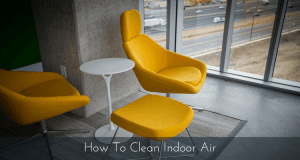
Once the space has been air purified, thoroughly damp cloth wipe down all surfaces, then let the room’s air circulate for at least eight hours. Continue to damp cloth wipe the settled dust intermittently, and keep the vacuuming process going until the dust is finally gone, for today at least!
From Man Made Sources
Man-made sources usually require professional intervention. The first step is to chat with a Building Biologist to determine exactly what kinds and levels of dust and contaminants are plaguing your indoors. After that, the Building Biologist can recommend ….
Add the tips and solutions according to on site visual inspection and air sampling results, damp cloth dusting to help the process along. Should the damp cloth dusting and vacuuming not do the trick, you may have to use a targeted air purifier to remove contaminants, also available here, to attack the indoor air directly
Time To Bring In A Pro?
PRODUCT:
Building Biologist
I believe you should spend less time figuring out what to do (that is my job) and more time breathing easier, living easier. I cut out all the fluff and confusion to indoor air quality maintenance and strip it down as a Building Biologist. Adverse health effects and effective strategies reduce occupants’ exposure by eliminating and controlling as many sources of pollutants as possible.

Future Prevention
Preventing dust is as important as any other facet of indoor air care maintenance.
To keep organic dusts from forming, make sure to wipe your feet or remove shoes at the front door before entering at all times.
Make sure all windows and doors are open, to keep the ventilation working properly. Keep your room clean by regularly vacuuming (manually or with an automatic vacuum cleaner) and skimming the surface of the flooring.
The best preventative measure against all kinds of dust is to test the air regularly for the presence of contaminants, and address it before it takes hold.
If your home is prone to outdoor dust contamination due to vehicle exhaust or emissions from industry, be sure to use an air purifier with a high quality HEPA filter as part of regular indoor air quality maintenance. These units capture particles in the air, preventing them from binding to indoor surfaces where you sleep, eat and live.
In the case of a bush fire problem or windy days, it’s worth noting that an air purifier with carbon filter can also capture smoke and fumes. Carbon captures the gases, which irritates eyes, nose and skin and breathed into your lungs. Different amounts of carbon are customised for the purpose.
Where to next?
Strategies to reduce indoor dust according to Environmental International article (2019):
- no shoes policy and keep windows closed
- wash hands and face regularly
- establish an entry system to capture pollutants and moisture
- use wet rag to dust all surfaces
- use washable rugs
- use vacuum cleaner fitted with HEPA filter
- wet morpping instead of dry sweeping
- wash dust and soil laden clothes sepearately
In my opinion you may wish to consider adding to these strategies:
- use a damp cloth and damp mopping preferably to dry surfaces quicker
- use a vacuum cleaner not only with a HEPA filter, also a motorised power head
- have conversations about Air Purification
- and ask questions on the Mitey Fresh Facebook page, other people may well be wondering the same thing, and I will do my best to answer them there.
Towards healthier living, Carol Parr ♥
References:
Doyi INY, Isley CF, Soltani NS, Taylor MP. Human exposure and risk associated with trace element concentrations in indoor dust from Australian homes. Environ Int. 2019 Dec;133(Pt A):105125. doi: 10.1016/j.envint.2019.105125. Epub 2019 Oct 18. PMID: 31634663. Online. Available: https://pubmed.ncbi.nlm.nih.gov/31634663/ Accessed: January 20, 2021
Michie, N.A. 1997, An Investigation of the Climate, Carbon Dioxide and Dust in Jenolan Caves, N.S.W. (Online). Available: http://www.speleogenesis.info/directory/karstbase/pdf/seka_pdf9950.pdf September 5, 2018
As a result of working with me, women and their families thrive, work places and their personnel prosper, mouldy and chemical / electrical sensitive occupants heal. They’re healthier, they’re alert, they’re happier, more relaxed, more productive, and enjoying life.
Together we bring about healthy indoor environments, create rooms that provide calmness, healthy sleep, relaxation and restored energy for you and your family. We will create workplaces that provide ideal personnel attendance and elevated productivity.
By returning indoor spaces to more natural conditions, we strengthen you and your family’s mind, body and spirit. It’s nice that it also sustains our planet’s ecology, you’d agree.
You can find my latest enterprises by clicking here: http://www.linkedin.com/in/carolparr
Author
-
We’re glad you’re here. We’re Carol and Tony, founders of one of the longest running Healthy Home Blogs in the world, Mitey Fresh Australia. We’ve been on this journey for the last 25 years and are passionate about helping families sift through health hazards and triggers like allergens, mould, water damage, chemicals and EMFs, to get clarity about what’s toxic and what’s not so they can create a healthy and happy home for their family they love. Each month, people visit this blog seeking focus on the health and wellbeing of their loved ones, sustainable and effective practice tips and guides, to help create and manage healthier indoor spaces, improve the built environment that is pleasing to the senses and support healthy living and nature, every day. Starting this blog was to help change people’s lives, one family at a time, and we can’t wait to share how its allowed us to stand next to you and show you how interpreting these synergies between buildings and the environment they are built in will impact upon the health and well-being of those who occupy them. Find out more about Healthy Homes and what this blog can do for you!

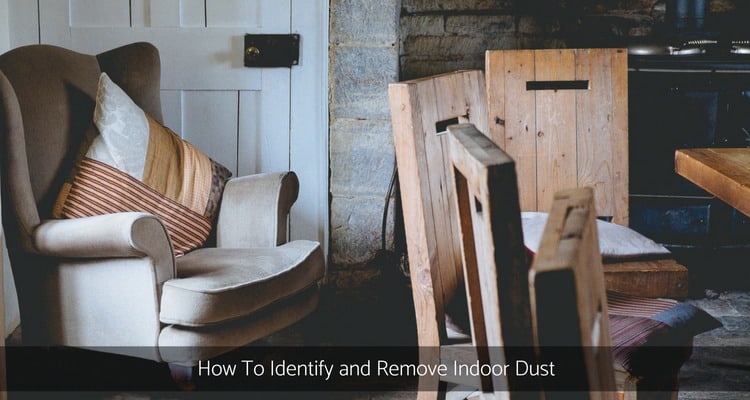
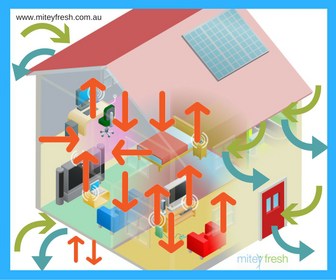




I need help and I hate dust!!!
Currently I live in a renovated house that was divided into three independent living units in a Retirement village.
I live on the upper level, my living/bedroom face west and the front door (no back door), faces south-east (maybe).
Windy days bring dust, pollens, car fumes into the unit.
Summer the temperature without air conditioning has been up to 37 degrees C.
Humidity in summer is very high.
I’m not sure whether there are batts in the roofspace.
My downstairs neighbour has both garages stacked with paper product as a result of the work they do, so basically my bedroom is above their SUV, when the car is parked.
I would like someone to come and measure the dust particles in this unit.
I have a breathing problem which I believe is exacerbated by the dust count in this unit.
Could someone please help me.
Thank you.
Hi Karina, we replied to your email early September however it’s has bounced back.
I’d like to take this opportunity to reply here. Unsure where you are located and if not in Sydney Aus, then invite you to follow this link to our free checklist. https://www.miteyfresh.com.au/uncategorized/is-house-keeping-creating-issues/